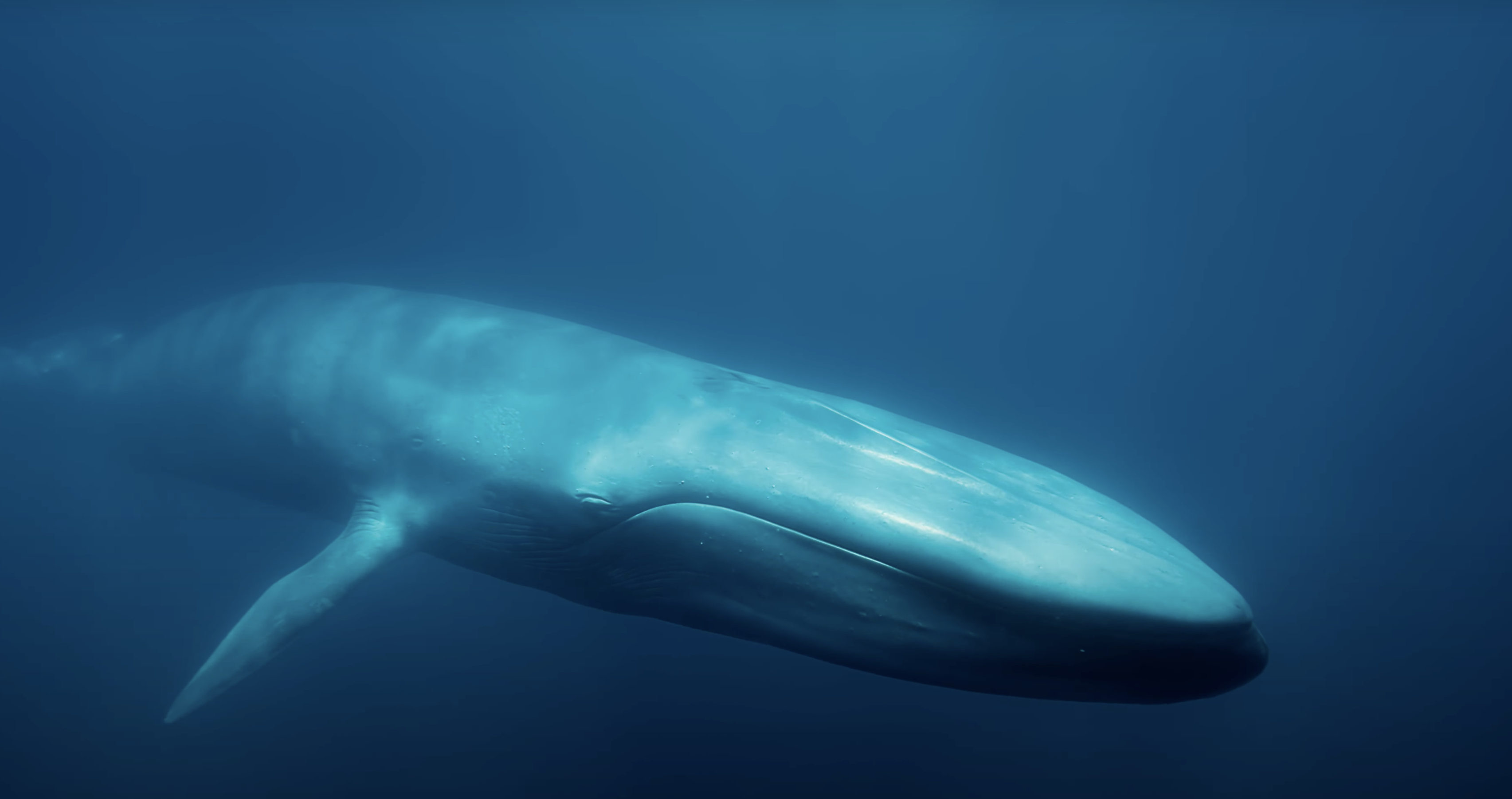
Blue Whales: Return of the Giants 3D narrated by award-winning actor Andy Serkis, takes viewers on a journey of a lifetime to explore the world of the magnificent blue whale, a species rebounding from the brink of extinction. Blue whales are the largest animals ever to have lived, bigger than any dinosaur, yet we know surprisingly little about them.
- Get your tickets to Blue Whales: Return of the Giants 3D here.
Blue Whales: Return of the Giants 3D now playing in the giant screen Infinity Theater will entertain audiences of all ages and transform our understanding of these iconic creatures. The film follows two scientific expeditions: one, a high-risk mission to find a missing population of blue whales, not seen in 50 years; and the other, to join Diane Gendron, the “Blue Whale Whisperer,” in Mexico’s Gulf of California, where she and her team explore the important role these remarkable animals play in the health of our oceans.
The film provides an unforgettable window into the lives these animals live—and the extremes scientists must endure to study them. Joined by a cast of supporting characters — from dolphins and sperm whales to sea lions and orcas—the blue whale finally gets its star turn … in life size, on the giant screen Infinity Theater.
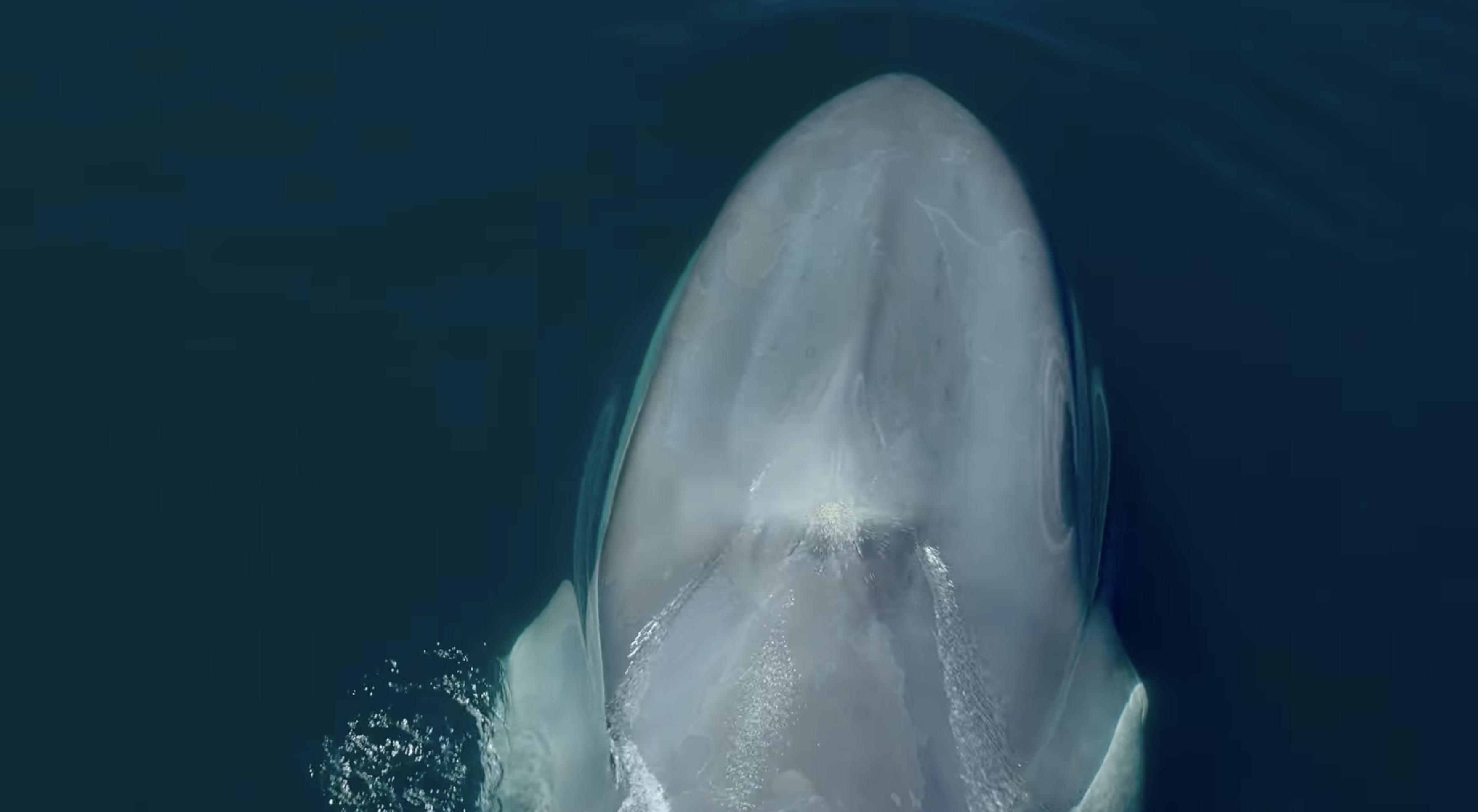
Here are a few fun facts about the movie:

• The blue whale is the biggest animal to have ever lived, and can grow up to 100 feet long.
• A blue whale’s heart is about the size of a golf cart.
• Blue whales can eat up to 16 tons of food a day, which would fill an entire dump truck.
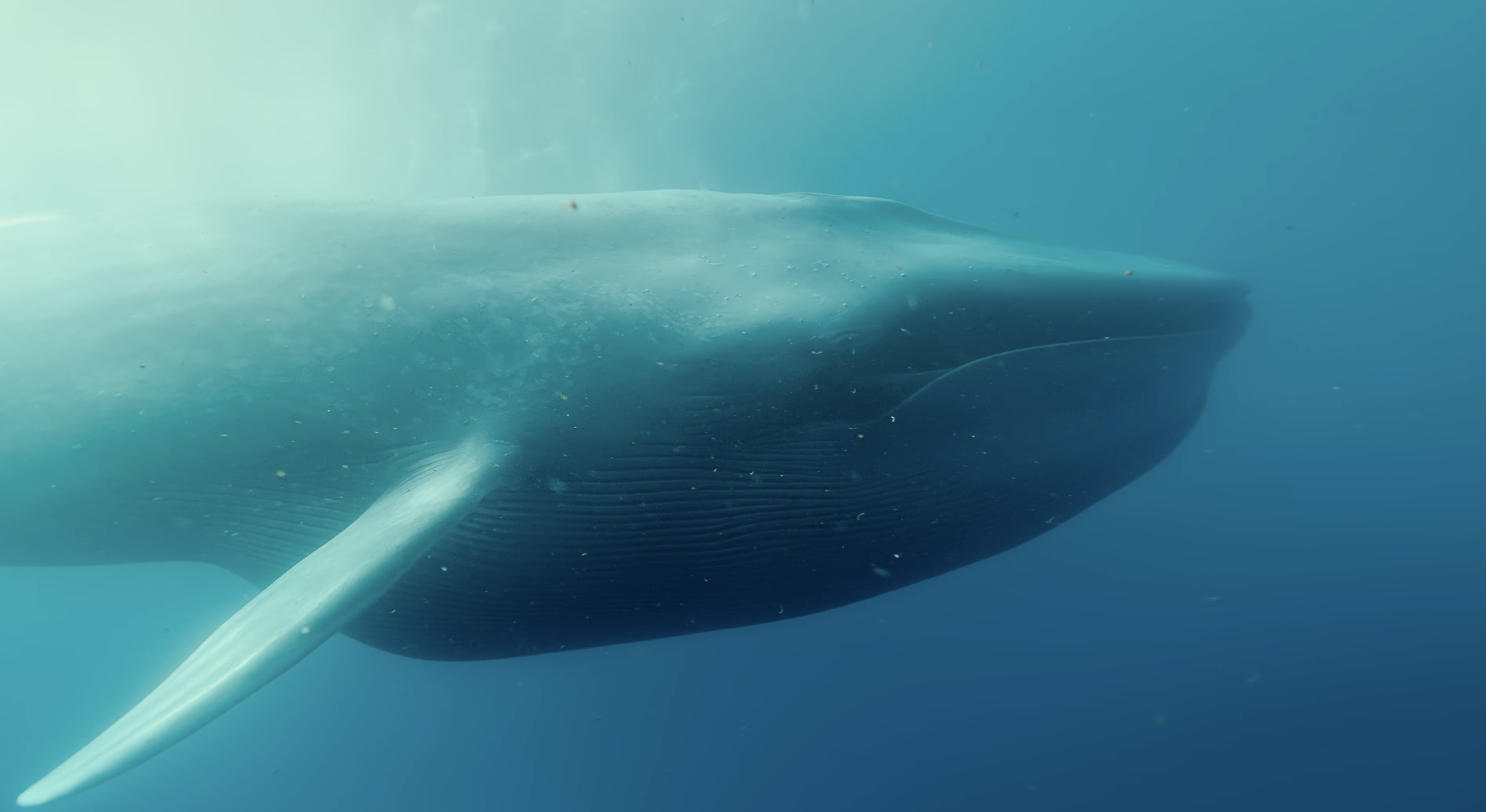
• At the surface, the heart rate of a blue whale is about 33 beats per minute. During a dive, that rate can slow to as low as 2 beats per minute.
• The poo of a blue whale is extremely rich in nutrients and acts as a vital fertilizer for the ocean.
• Every blue whale has a unique spot pattern and dorsal fin shape. These markings are like fingerprints. Scientists can use them to identify individual whales.
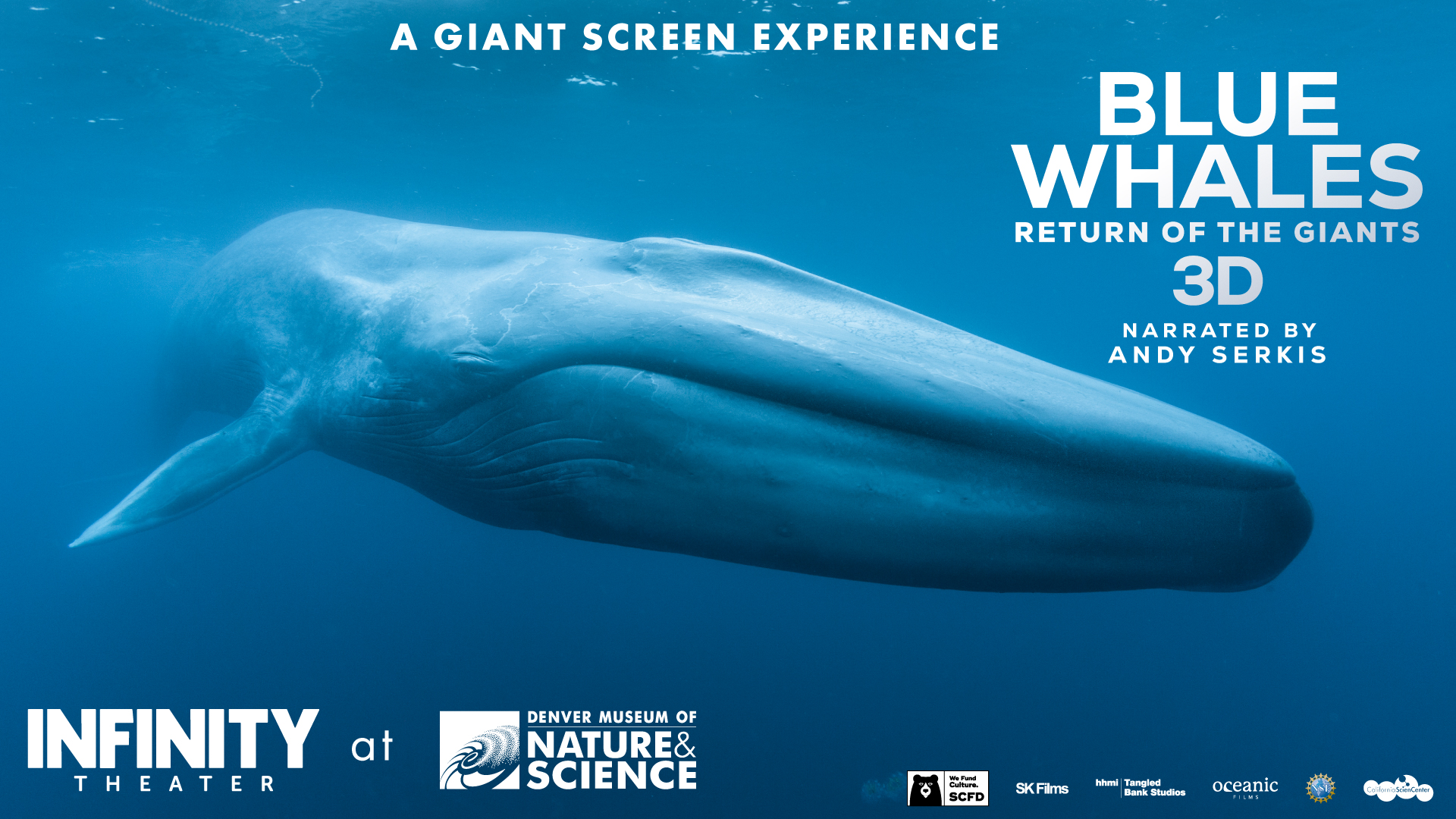
• Blue whales have two blowholes, each over a foot in diameter! When the whale exhales, its blow can reach 370 miles per hour and shoot 30 feet into the air.
• Blue whales’ throats are elastic, like accordions. They can expand to hold up to 20,000 gallons of water when the whales lunge for food.
• Massive back muscles power the blue whale’s enormous tail. The tail can reach 25 feet wide, and generate twice as much force as an F-15 fighter jet.
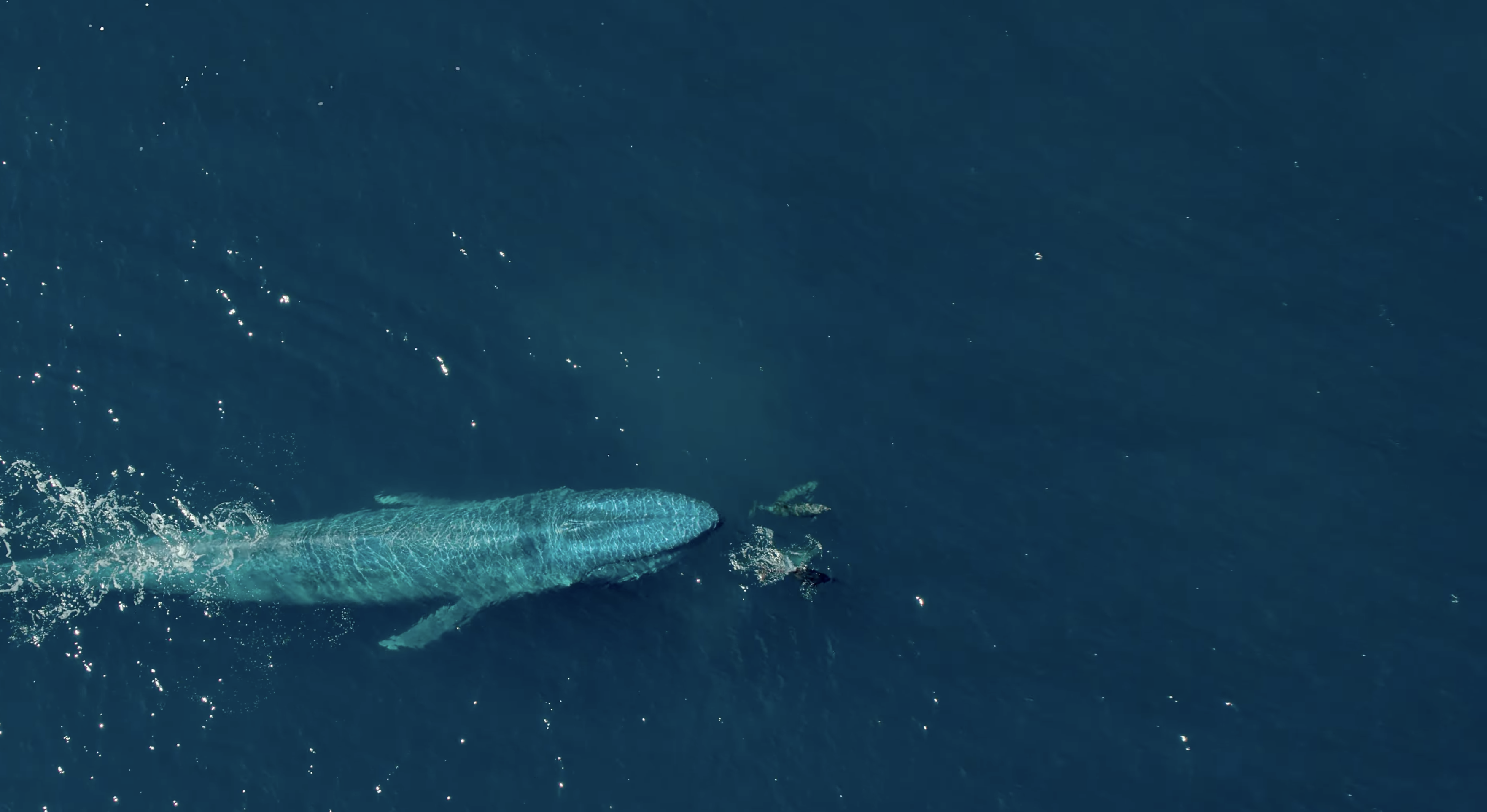
• A blue whale’s eye is the size of a grapefruit, but that’s small for such a big body.
• Colossal squid, one-third the length of blue whales, have eyes the size of soccer balls!
• The blue whale’s lower jaw is made up of two bones called mandibles. They’re the biggest bones on Earth, letting the whales take huge gulps of
krill-filled water.

• The small bones in the tail of the whale, called vestigial hip bones, are evolutionary relics. They’re evidence that whales evolved from four-legged
ancestors, which walked on land.
• A blue whale can hold a lot of air in its lungs — about as much as 335 party balloons!
• A whale can dive for up to 90 minutes at a time.